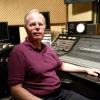
Sign in to follow this
Followers
0

Velociraptor or SSD for FSX?
By
JNS, in System Hardware: PC | MOBO | RAM | CPU | HDD | SSD | PSU etc


By
JNS, in System Hardware: PC | MOBO | RAM | CPU | HDD | SSD | PSU etc